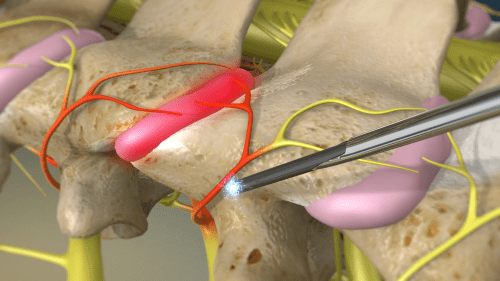
Radiofrequency Ablations (RFA)
A minimally invasive procedure that uses heat to target and disrupt pain-signaling nerves, providing effective and long-lasting relief from chronic pain conditions.
Radiofrequency ablation (RFA) is a minimally invasive medical procedure that offers effective relief for individuals dealing with chronic pain, particularly when other treatments have proven less successful.
This innovative technique uses heat generated by radio waves to precisely target and interrupt the transmission of pain signals from specific nerves. RFA is often used to manage conditions such as chronic back pain, neck pain, and joint pain related to arthritis. If you’re seeking a long-lasting solution to chronic pain that doesn’t rely on medication or invasive surgery, RFA may be a viable option for you.
Radiofrequency ablation (RFA) is typically performed as an outpatient procedure by a specialized healthcare provider, often an interventional pain management specialist.
During the procedure, you’ll be positioned comfortably, and the treatment area will be cleansed and sterilized. Local anesthesia is applied to numb the targeted area. A small, specialized needle or electrode is then guided into position using fluoroscopy (real-time X-ray). Once the needle is precisely placed near the targeted nerve or tissue responsible for your pain, radiofrequency energy is transmitted through the electrode. This energy generates heat, which, when applied, creates a thermal lesion on the nerve or tissue, effectively interrupting the transmission of pain signals.
The procedure is usually well-tolerated, and most patients can return to their regular activities shortly afterward, with minor discomfort that typically resolves within a few days.
Initially after radiofrequency ablation, you might experience some mild discomfort or localized swelling at the treatment site, but these typically resolve within a few days. You can often resume normal activities soon after the procedure, although it’s advisable to avoid strenuous exercise or activities that may strain the treated area.
Applying ice to the treated area can help reduce any temporary discomfort or swelling. It’s essential to stay well-hydrated and maintain a healthy lifestyle to support the body’s natural healing processes. Most patients experience significant pain relief within a few weeks after RFA, and the effects can last several months to a year or more.
Follow-up appointments will most likely be necessary to monitor your progress and determine if additional treatments are necessary.
Get to the root of your pain.
Experience comprehensive pain care designed to treat the root cause of your pain, not just your symptoms.
